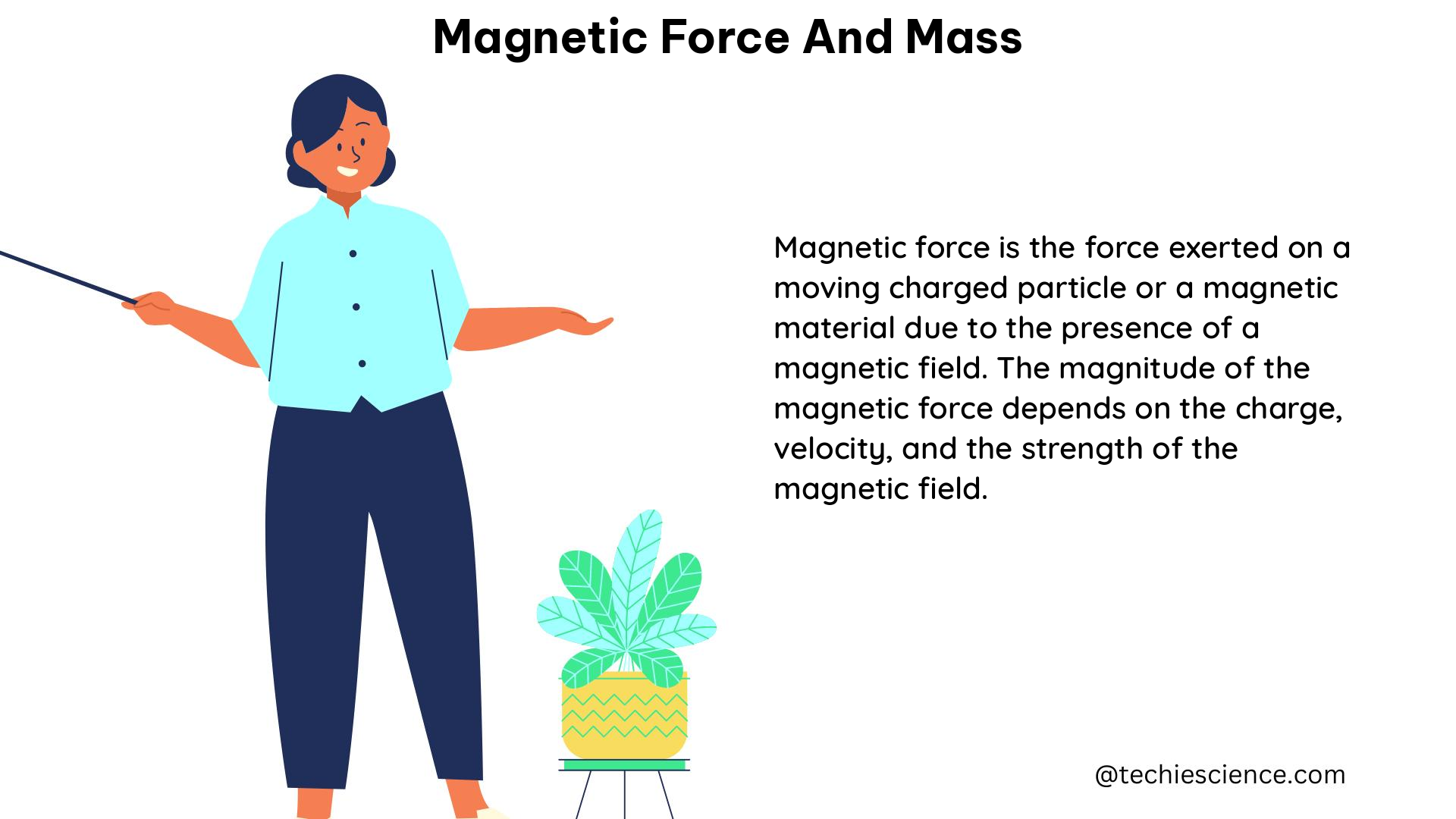Magnetic force and mass are intricately linked through the principle of the force exerted on a moving charge in a magnetic field, as described by the equation F = ILB sin(θ), where F is the force, I is the current, L is the length of the wire, B is the magnetic field strength, and θ is the angle between the direction of the current and the magnetic field. In this experiment, the angle between the current and the magnetic field is always 90°, simplifying the equation to F = ILB.
Understanding the Equation: F = ILB sin(θ)
The equation F = ILB sin(θ) is the fundamental relationship that describes the magnetic force experienced by a current-carrying wire in a magnetic field. Let’s break down each component of the equation:
- Force (F): The force experienced by the wire, measured in Newtons (N).
- Current (I): The electric current flowing through the wire, measured in Amperes (A).
- Length (L): The length of the wire exposed to the magnetic field, measured in meters (m).
- Magnetic Field Strength (B): The strength of the magnetic field, measured in Teslas (T).
- Angle (θ): The angle between the direction of the current and the magnetic field, measured in degrees (°).
When the angle θ is 90°, as in the experiment described, the equation simplifies to F = ILB, making the relationship between magnetic force and mass more straightforward.
Measuring Magnetic Force through Mass Changes

The force experienced by the wire can be measured by the change in the apparent mass of the magnet, which is sitting on a balance. This change in mass is a direct measure of the force acting on the wire.
Experiment 1: Relationship between Magnetic Force and Mass of Current Loop
In this experiment, the relationship between the magnetic force and the mass of the current loop was investigated. The results showed a direct relationship between the number of magnets and the force, with the slope of the line being 0.31 grams/Amps. This indicates that for every Amp of current, there was an increase in mass of 0.31 grams. The R² value of 0.9928 suggests a strong correlation between the variables.
Experiment 2: Measuring Force Exerted on a Current-Carrying Wire
In another experiment, the force exerted on a current-carrying wire in a magnetic field was measured by varying the current and the length of the wire. The results showed a linear relationship between the force and the length of the wire, with a slope of 0.1391 grams/centimeter. From the slope, the magnitude of the magnetic field was calculated to be 0.42 Tesla.
Factors Affecting Magnetic Force and Mass
Several factors can influence the relationship between magnetic force and mass, including:
- Current (I): Increasing the current through the wire will result in a proportional increase in the magnetic force and the observed change in mass.
- Length (L): Increasing the length of the wire exposed to the magnetic field will also lead to a proportional increase in the magnetic force and the observed change in mass.
- Magnetic Field Strength (B): The stronger the magnetic field, the greater the magnetic force and the observed change in mass.
- Angle (θ): When the angle between the current and the magnetic field is 90°, the magnetic force is maximized, as indicated by the sin(θ) term in the equation.
Practical Applications and Considerations
The relationship between magnetic force and mass has numerous practical applications, including:
- Magnetic Levitation: Magnetic levitation, or maglev, technology utilizes the magnetic force to suspend objects, such as trains, above a track without physical contact. The balance between magnetic force and the object’s mass is crucial for maintaining stable levitation.
- Magnetic Sensors: Magnetic sensors, such as Hall effect sensors, rely on the interaction between magnetic fields and electric currents to detect and measure magnetic fields. These sensors are used in various applications, including position and speed detection, current measurement, and magnetic field mapping.
- Magnetic Resonance Imaging (MRI): MRI machines use strong magnetic fields to align the nuclear magnetization of atoms in the body, allowing for detailed imaging of internal structures. The relationship between magnetic force and mass is essential for the design and operation of these medical imaging systems.
Conclusion
In summary, the relationship between magnetic force and mass is a fundamental principle in physics, described by the equation F = ILB sin(θ). The force experienced by a current-carrying wire in a magnetic field can be measured by the change in the apparent mass of the magnet, which is sitting on a balance. The experiments discussed demonstrate the direct relationship between the magnetic force and the mass of the current loop, as well as the linear relationship between the force and the length of the wire. Understanding the factors that influence this relationship, such as current, length, and magnetic field strength, is crucial for various applications, including magnetic levitation, magnetic sensors, and medical imaging technologies.
References
- Magnetic Force (docx) – CliffsNotes, https://www.cliffsnotes.com/study-notes/5430956
- Lab 5 – Force on a Wire – WebAssign, https://www.webassign.net/question_assets/ncsulcpem2/lab_5/manual.html
- Current Balance Experiment (measure magnetic field strength), https://www.youtube.com/watch?v=N4H1X4i2OZ4
- Magnetic Fields and Distance – Activity – TeachEngineering, https://www.teachengineering.org/activities/view/rice_magnetic_activity1
- Mass and Magnets | Physics Van | Illinois, https://van.physics.illinois.edu/ask/listing/365
Hi, I’m Akshita Mapari. I have done M.Sc. in Physics. I have worked on projects like Numerical modeling of winds and waves during cyclone, Physics of toys and mechanized thrill machines in amusement park based on Classical Mechanics. I have pursued a course on Arduino and have accomplished some mini projects on Arduino UNO. I always like to explore new zones in the field of science. I personally believe that learning is more enthusiastic when learnt with creativity. Apart from this, I like to read, travel, strumming on guitar, identifying rocks and strata, photography and playing chess.